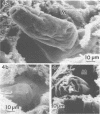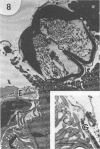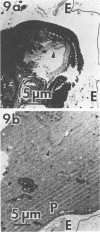Abstract
Leaf blade sections of orchardgrass were incubated with rumen fluid and examined by scanning and transmission electron microscopy for the mode of attack on tissues by rumen protozoa. Rumen protozoa resembling Epidinium ecaudatum from caudatum degraded forage tissue in diluted, whole rumen fluid suspensions of microbes containing 1.6 mg of streptomycin per ml, which inhibited bacterial fiber-digesting activity. Cell walls of mesophyll, parenchyma bundle sheath, and epidermis became swollen and frayed to reveal a microfibrillar network and loss of electron density, indicating partial degradation. Then the protozoa ingested whole cells and fragments of cell walls with the aid of their cilia. Plant cells with partially degraded walls as well as chloroplasts without walls were present within the protozoa. These entodiniomorphs digested orchardgrass leaves by partially degrading the plant cell walls apparently by extracellular enzymes and then ingestion of the plant cells and cell wall fragments.
Full text
PDF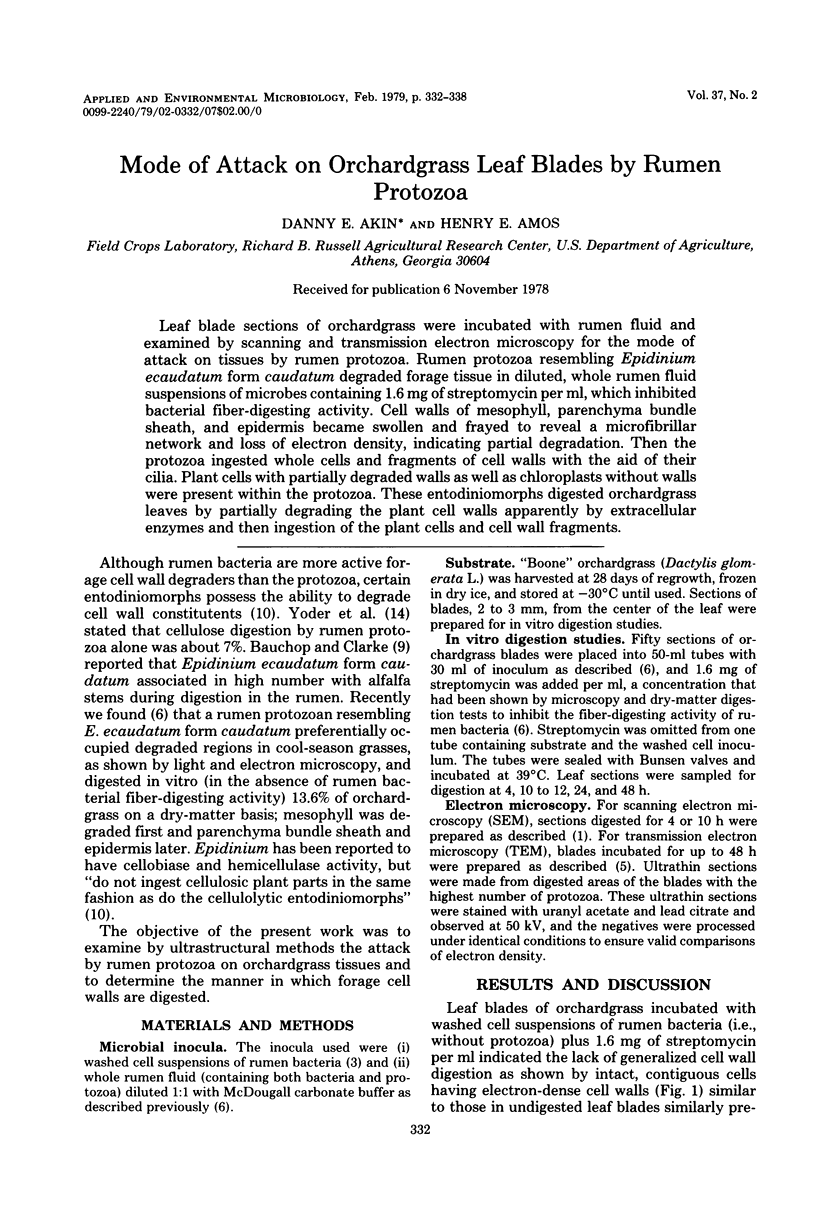
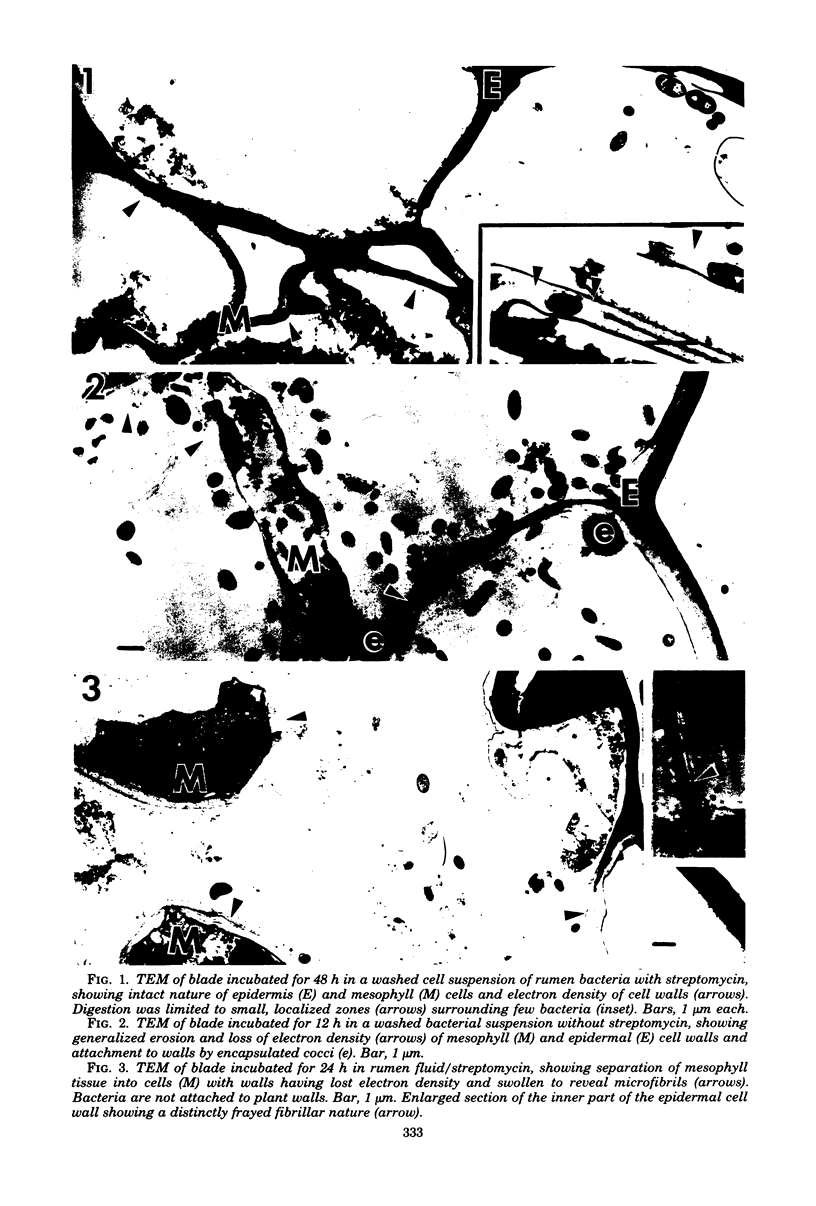
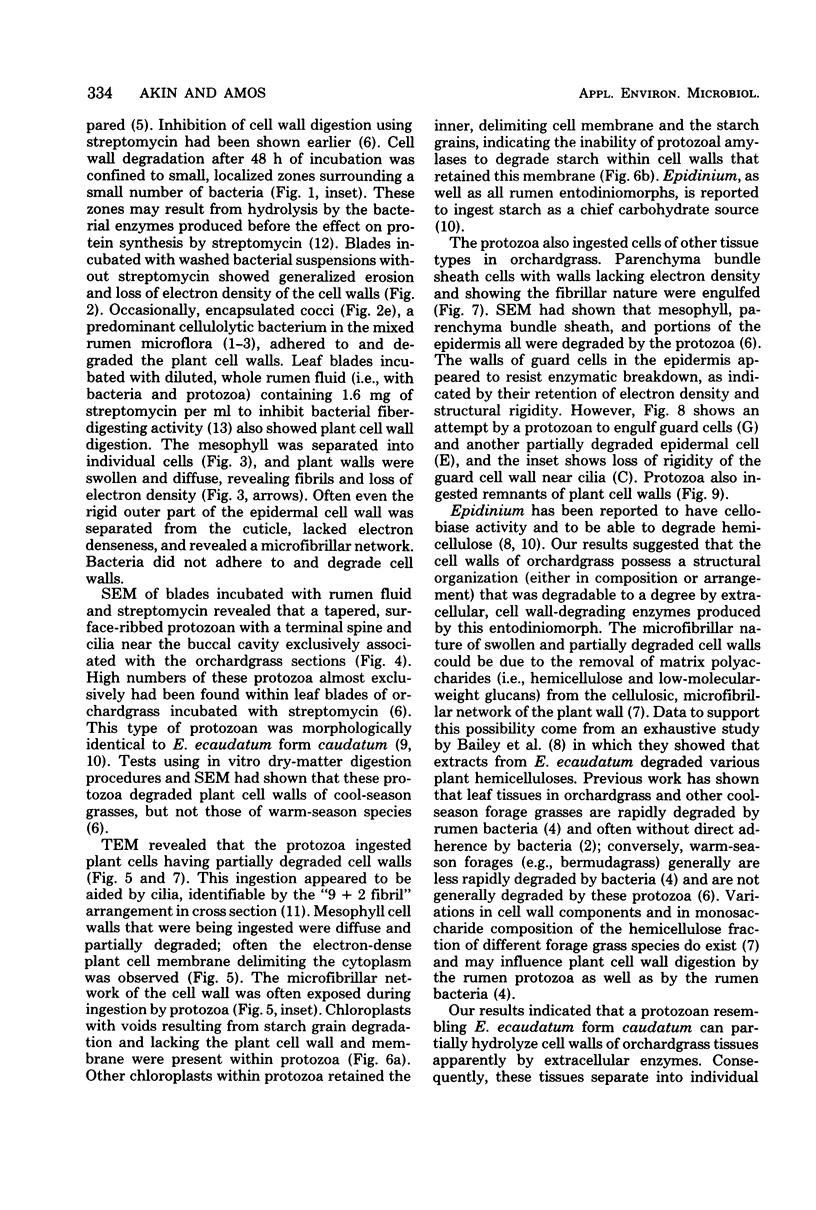
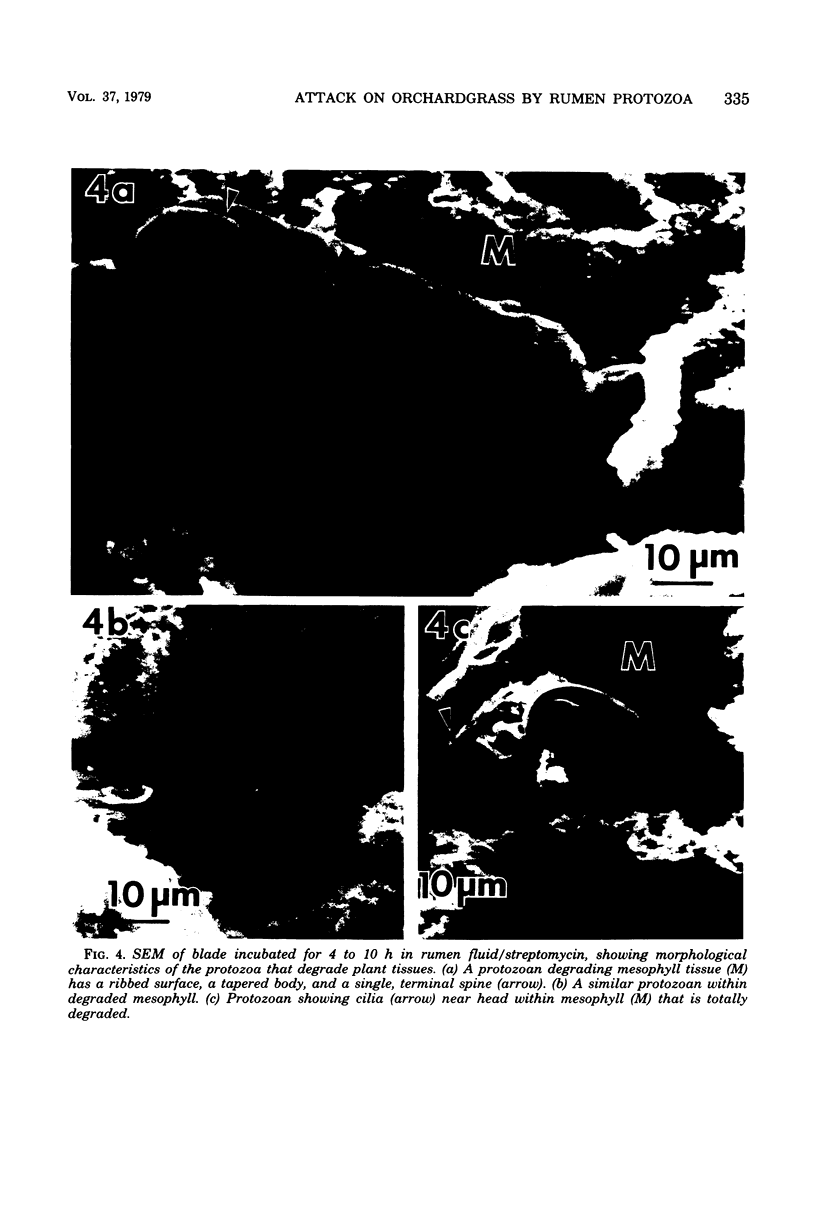
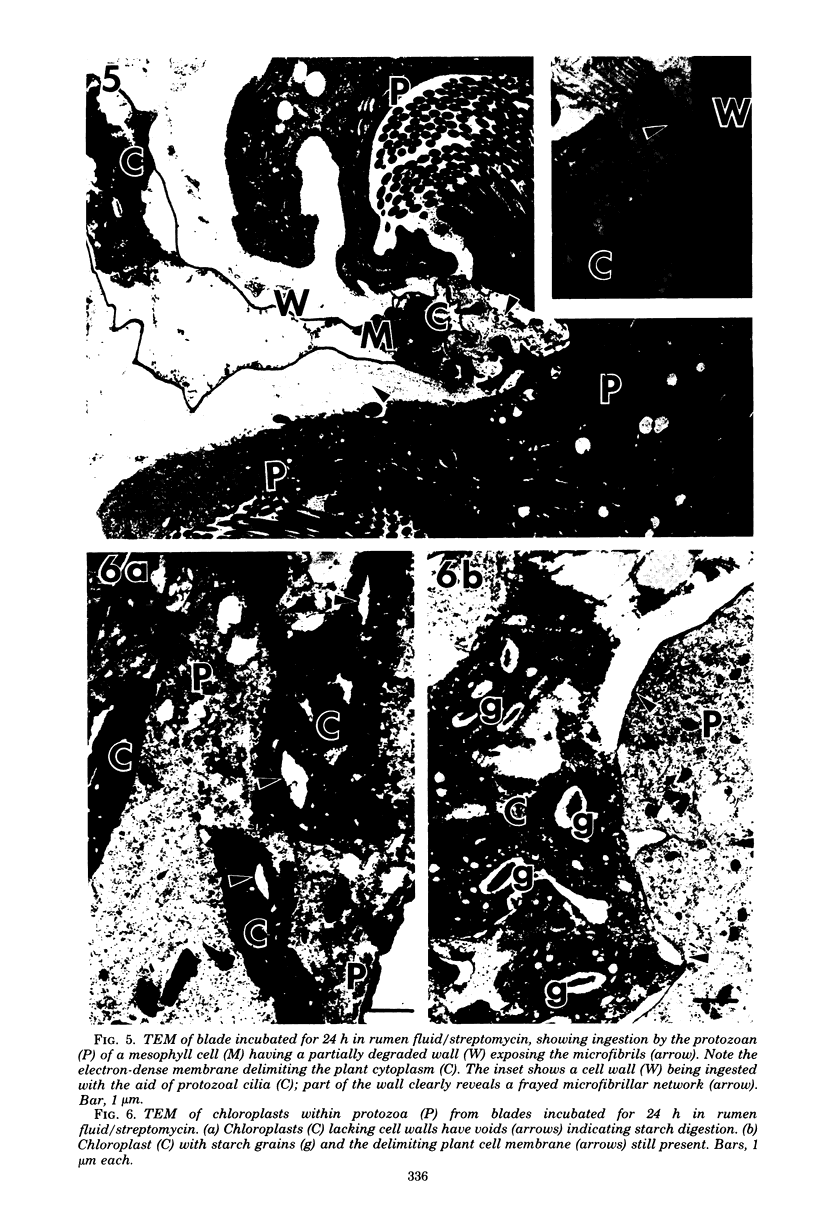
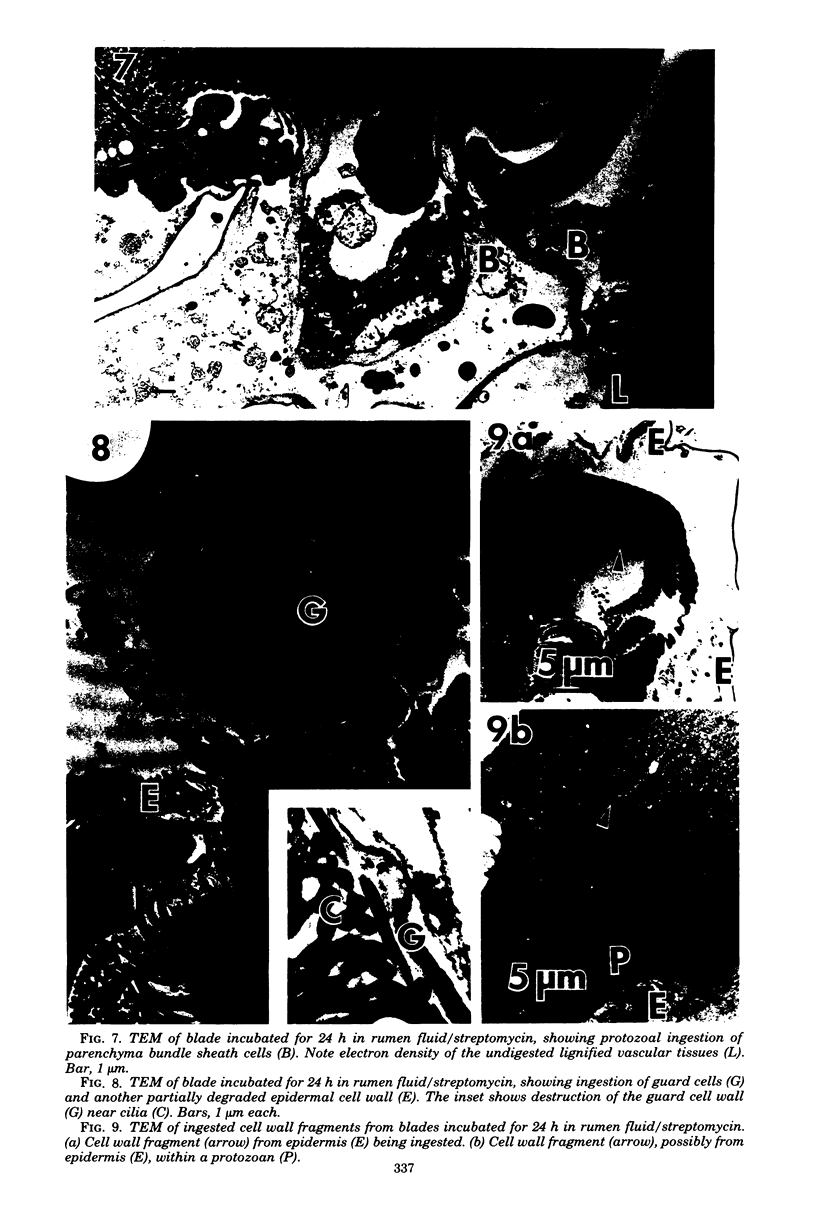
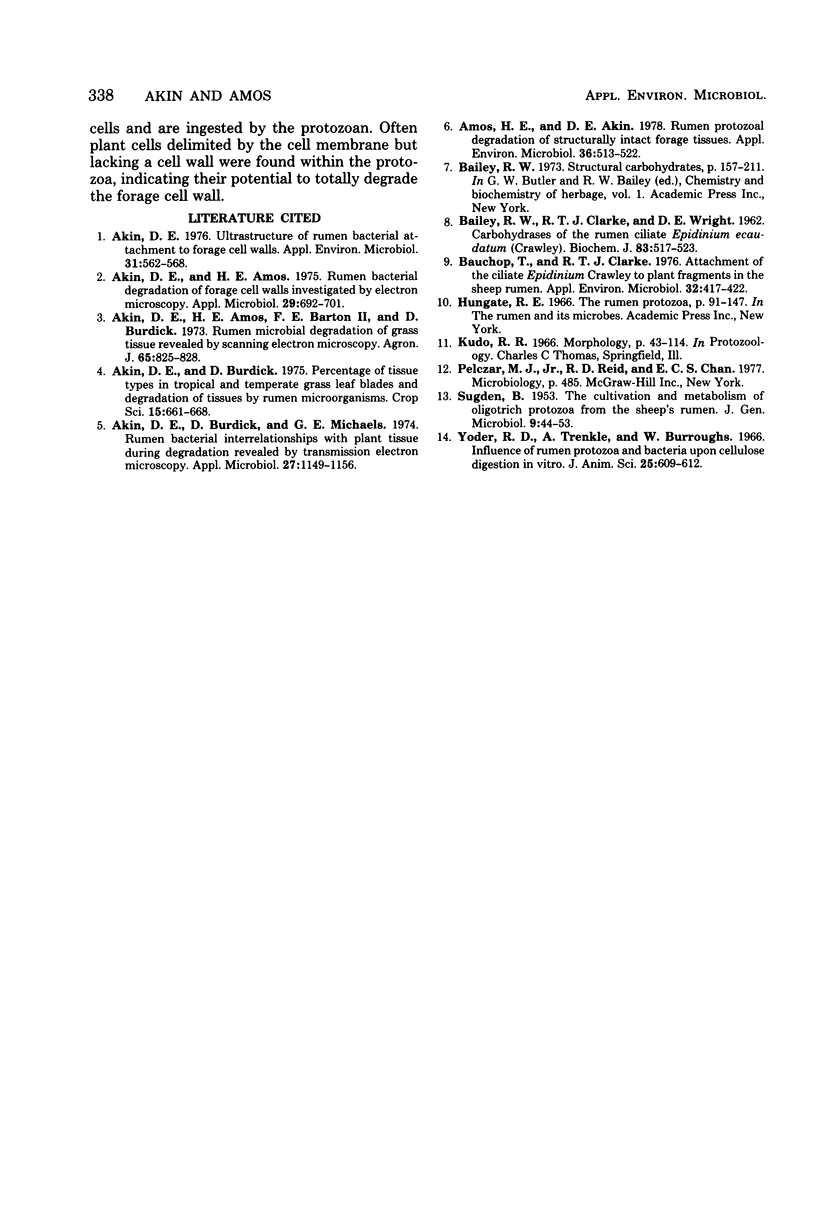
Images in this article
Selected References
These references are in PubMed. This may not be the complete list of references from this article.
- Akin D. E., Amos H. E. Rumen bacterial degradation of forage cell walls investigated by electron microscopy. Appl Microbiol. 1975 May;29(5):692–701. doi: 10.1128/am.29.5.692-701.1975. [DOI] [PMC free article] [PubMed] [Google Scholar]
- Akin D. E., Burdick D., Michaels G. E. Rumen bacterial interrelationships with plant tissue during degradation revealed by transmission electron microscopy. Appl Microbiol. 1974 Jun;27(6):1149–1156. doi: 10.1128/am.27.6.1149-1156.1974. [DOI] [PMC free article] [PubMed] [Google Scholar]
- Akin D. E. Ultrastructure of rumen bacterial attachment to forage cell walls. Appl Environ Microbiol. 1976 Apr;31(4):562–568. doi: 10.1128/aem.31.4.562-568.1976. [DOI] [PMC free article] [PubMed] [Google Scholar]
- Amos H. E., Akin D. E. Rumen protozoal degradation of structurally intact forage tissues. Appl Environ Microbiol. 1978 Sep;36(3):513–522. doi: 10.1128/aem.36.3.513-522.1978. [DOI] [PMC free article] [PubMed] [Google Scholar]
- BAILEY R. W., CLARKE R. T., WRIGHT D. E. Carbohydrases of the rumen ciliate Epidinium ecaudatum (Crawley). Biochem J. 1962 Jun;83:517–523. doi: 10.1042/bj0830517. [DOI] [PMC free article] [PubMed] [Google Scholar]
- Bauchop T., Clarke R. T. Attachment of the ciliate Epidinium Crawley to plant fragments in the sheep rumen. Appl Environ Microbiol. 1976 Sep;32(3):417–422. doi: 10.1128/aem.32.3.417-422.1976. [DOI] [PMC free article] [PubMed] [Google Scholar]
- SUGDEN B. The cultivation and metabolism of oligotrich Protozoa from the sheep's rumen. J Gen Microbiol. 1953 Aug;9(1):44–53. doi: 10.1099/00221287-9-1-44. [DOI] [PubMed] [Google Scholar]
- Yoder R. D., Trenkle A., Burroughs W. Influence of rumen protozoa and bacteria upon cellulose digestion in vitro. J Anim Sci. 1966 Aug;25(3):609–612. doi: 10.2527/jas1966.253609x. [DOI] [PubMed] [Google Scholar]






